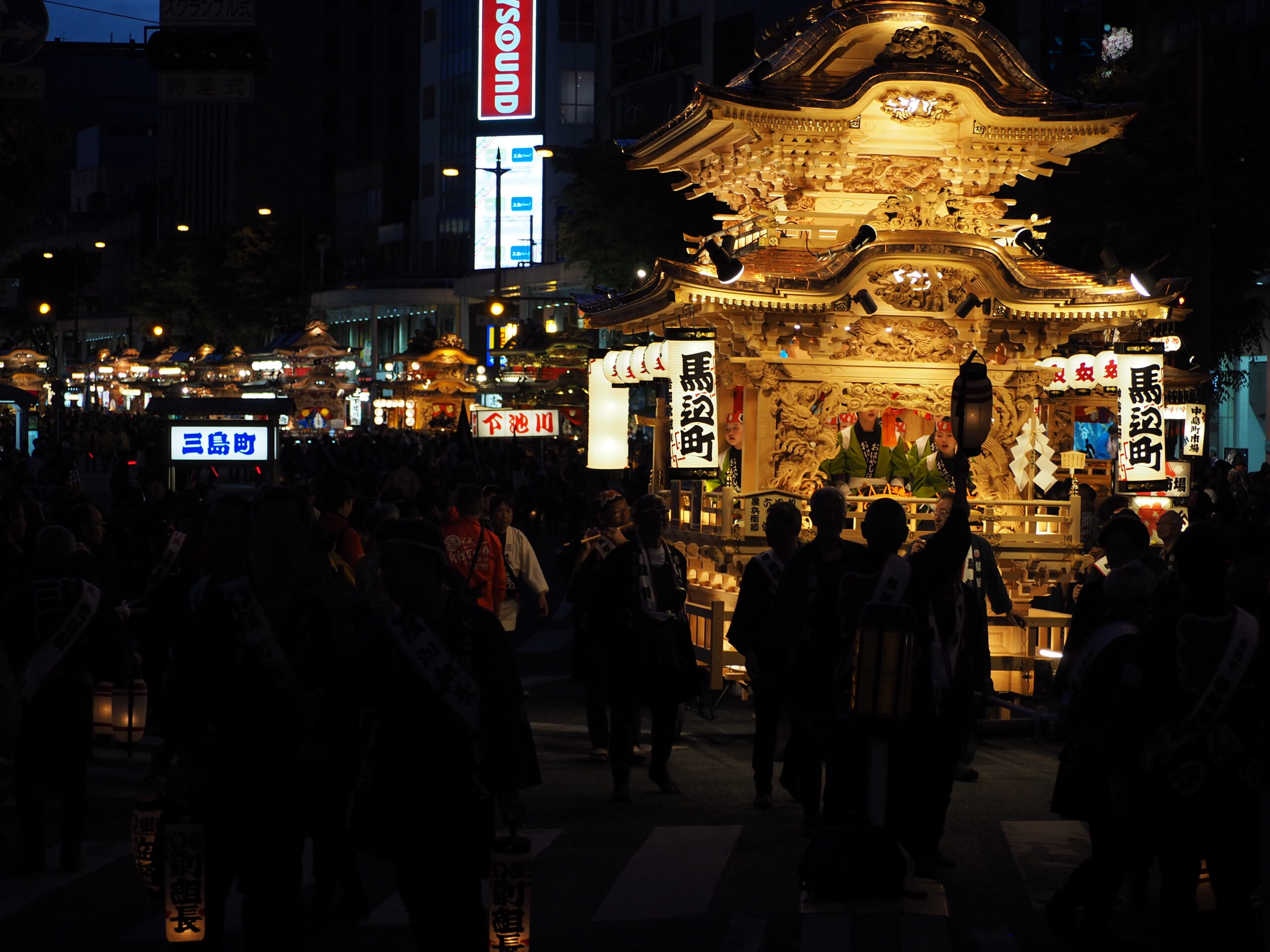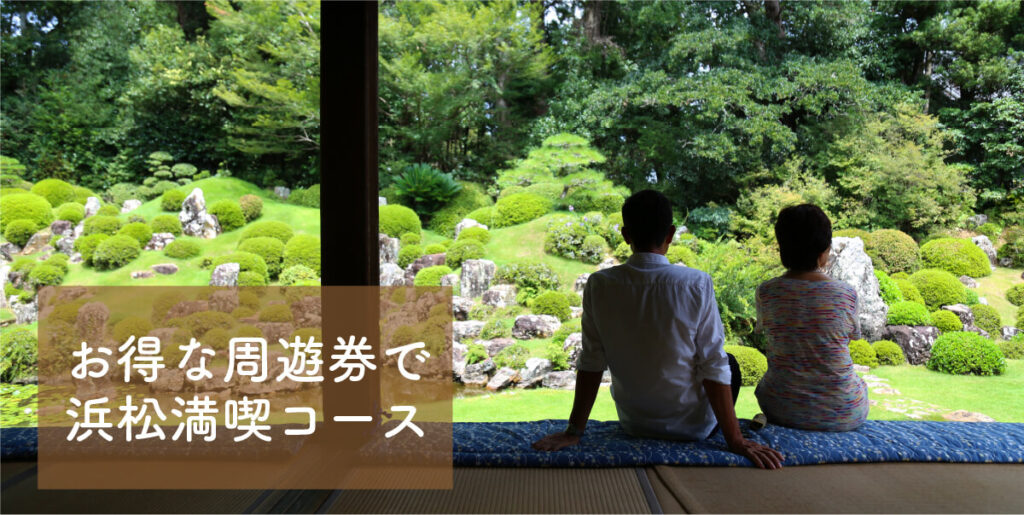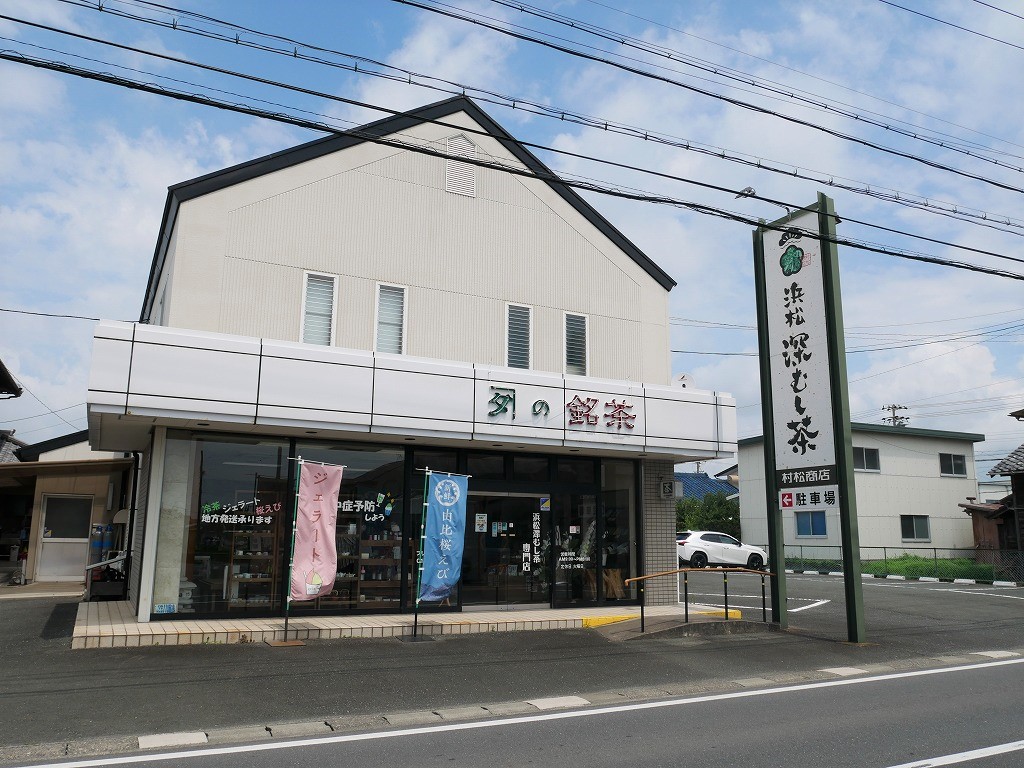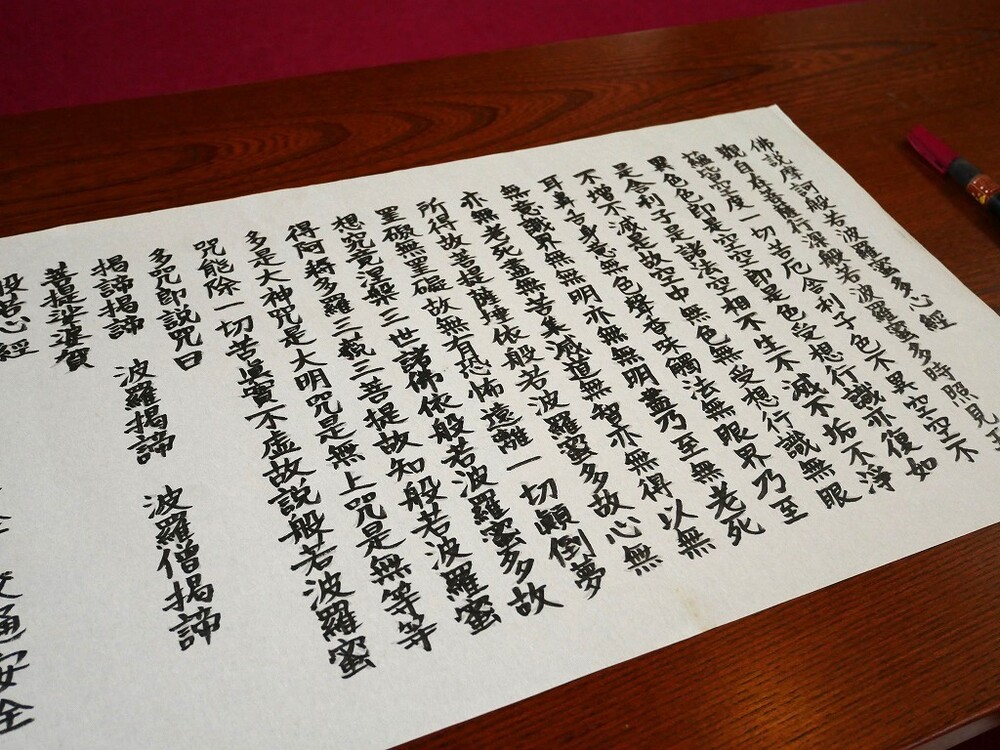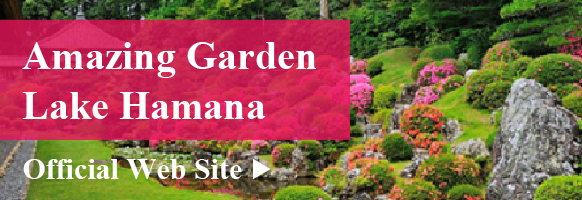Get to Know Hamamatsu
Hamamatsu Festival – Japan’s Kite Battle and Night Parade in Hamamatsu, Shizuoka (Chubu Region / Central Japan)
The Hamamatsu Festival takes place every year on May 3rd, 4th, and 5th in Hamamatsu City, Shizuoka, located in the Chubu region of Japan.
As the 2025 Hamamatsu Festival approaches, we would like to introduce the festival to you.
The Hamamatsu Festival offers exciting attractions, including the spectacular “Kite Battle” with over 170 towns, and the brilliant “Goten-yatai Procession” with more than 80 floats illuminating the streets at night.

▲Photo provided:Hamamatsu and Lake Hamana Tourism Bureau
The event fills both participants and spectators with excitement and joy.
The year starts with the festival and ends with the festival.
The energy of the people of Hamamatsu bursts out in a big way!
1.What is the Hamamatsu Festival?
It is a festival that celebrates the birth of a first-born child.
The community comes together to celebrate, wishing for the healthy growth of children.
During the day, the first kites, celebrating the birth of children, soar high in the sky at the Nakatajima Kite Flying Grounds. At night, the city center becomes the stage for the magnificent Goten-yatai floats, showcasing a stunning and graceful competition of beauty and elegance.
Another unique feature of the Hamamatsu Festival is that it is a “city festival.” It is a “citizen’s festival” with no connection to shrine or temple ceremonies.
2.The History of the Hamamatsu Festival
The origins of the Hamamatsu Festival are believed to date back over 450 years, during the Eiroku era (1558–1569). It is said that the festival began when the lord of Hikima Castle, who governed Hamamatsu at the time, raised kites to celebrate the birth of his eldest son. However, this story is not definitively recorded in historical documents.
The festival, which is said to have become established during the Edo period (1603–1868), grew even more vibrant during the Meiji era (1868–1912), when the tradition of kite battles became more formalized.
In this context, during the Taisho period (1912–1926), the kite flying events held at various locations were consolidated, and the Great Kite Battle was held at the present-day “Wajiyama Park.” (It is currently held at the Nakatajima Kite Flying Grounds.)
The festival continued every year until just before the start of World War II, and it was revived two years after the war ended.
In 1950 (Showa 25), the festival changed from the “Kite Flying Festival” to the current “Hamamatsu Festival,” and it has continued to the present day.
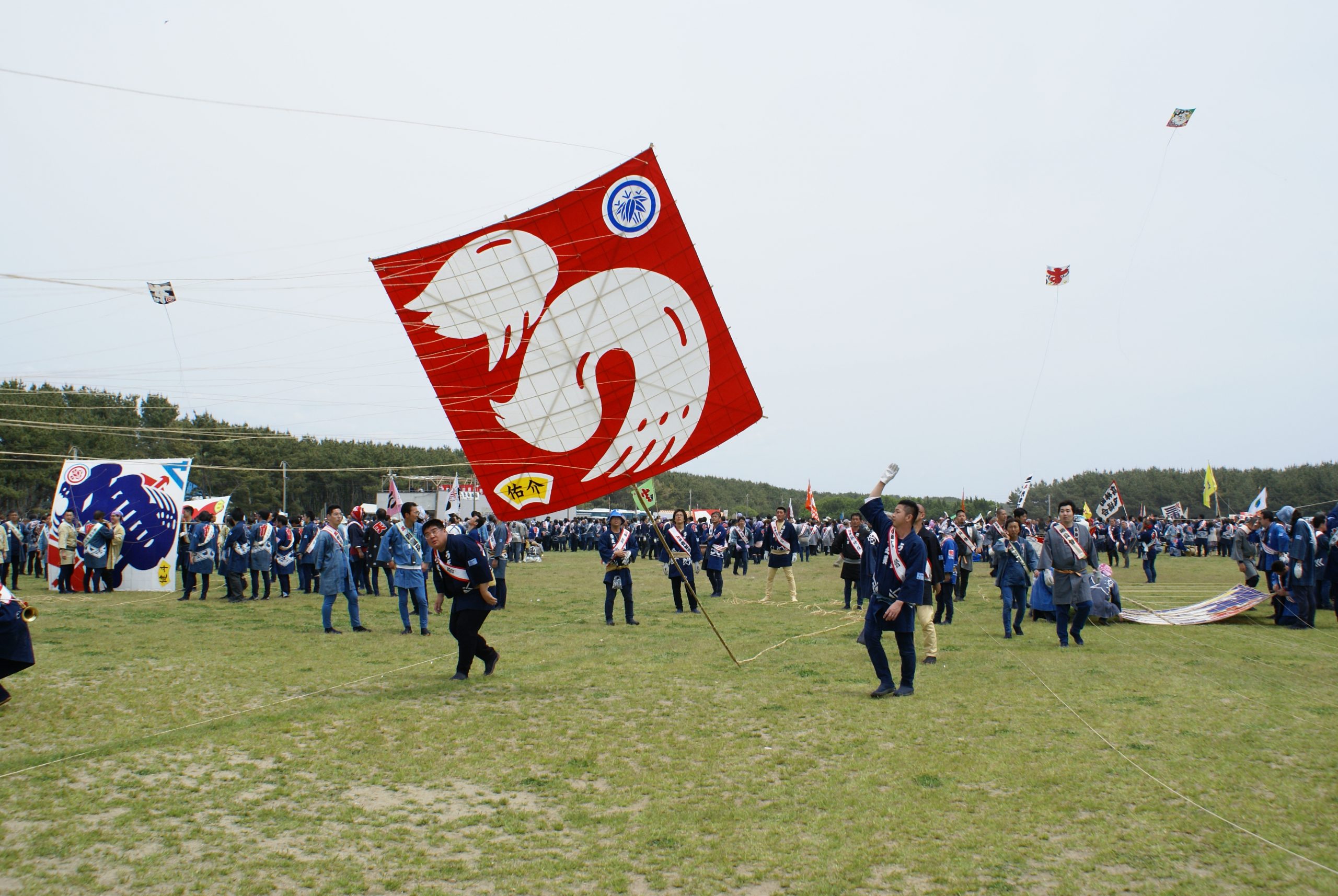
▲Photo provided:Hamamatsu and Lake Hamana Tourism Bureau
Before the war, the festival was held with participation from 40 to 50 towns, but in recent years, more than 170 towns take part, and over 80 towns are involved in the night Goten-yatai procession.
Additionally, the participation of high school students, which had been suspended, was revived starting in the 1993 (Heisei 5) fiscal year.
Literally, people of all ages, from children to the elderly, and regardless of gender, can participate in this city-wide festival, which continues to grow to this day.
3.Kite Battle – Proud Giant Kites Soar Gracefully in the May Sky
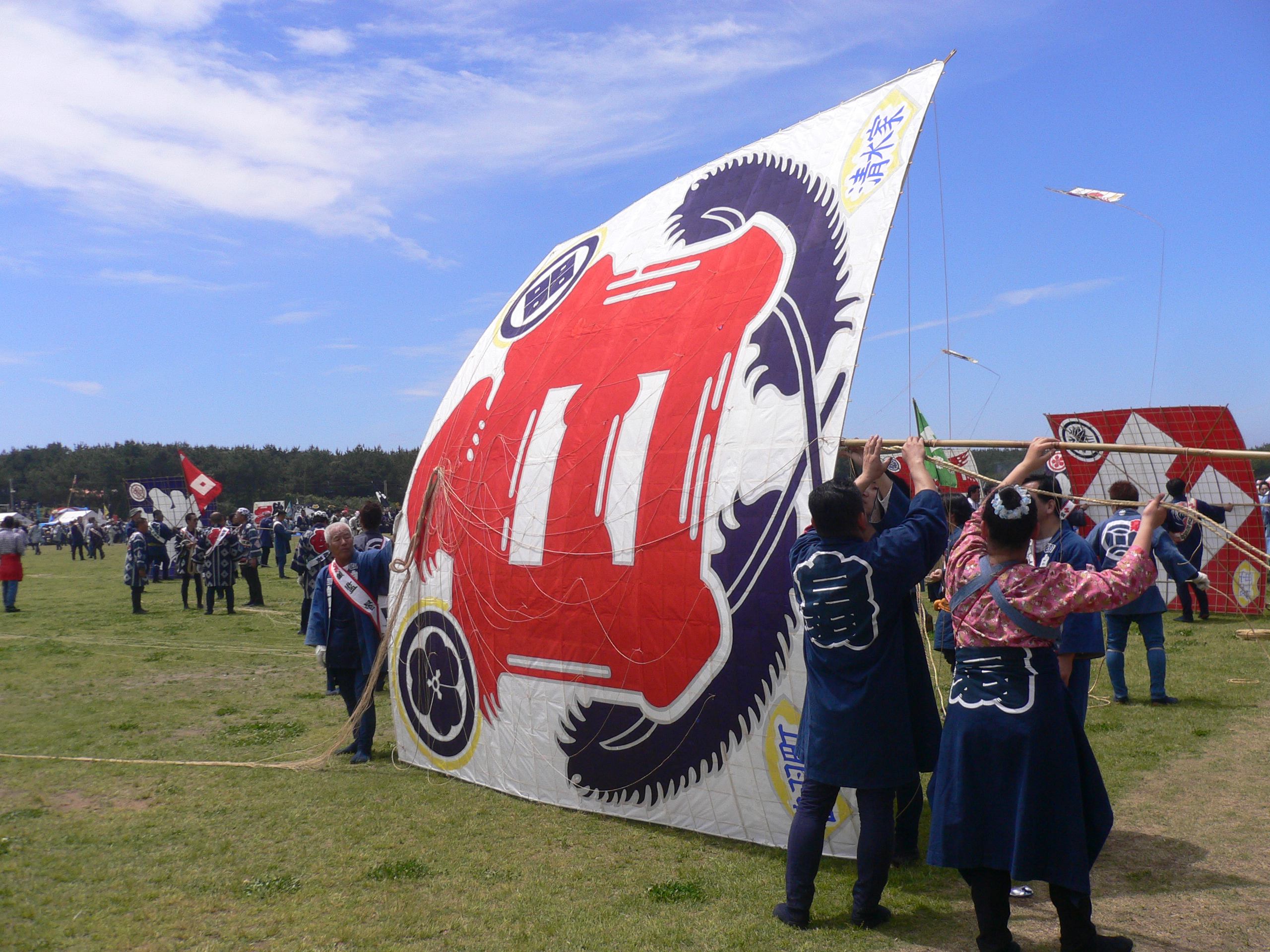
▲Photo provided:Hamamatsu and Lake Hamana Tourism Bureau
On the stage of the Nakatajima Kite Flying Grounds, where the early summer breeze is felt, the “first kites” soaring in the sky wish for children’s growth, and the exciting and intense kite-cutting battle takes place as the highlight of the event.
Highlight 1: Opening Ceremony
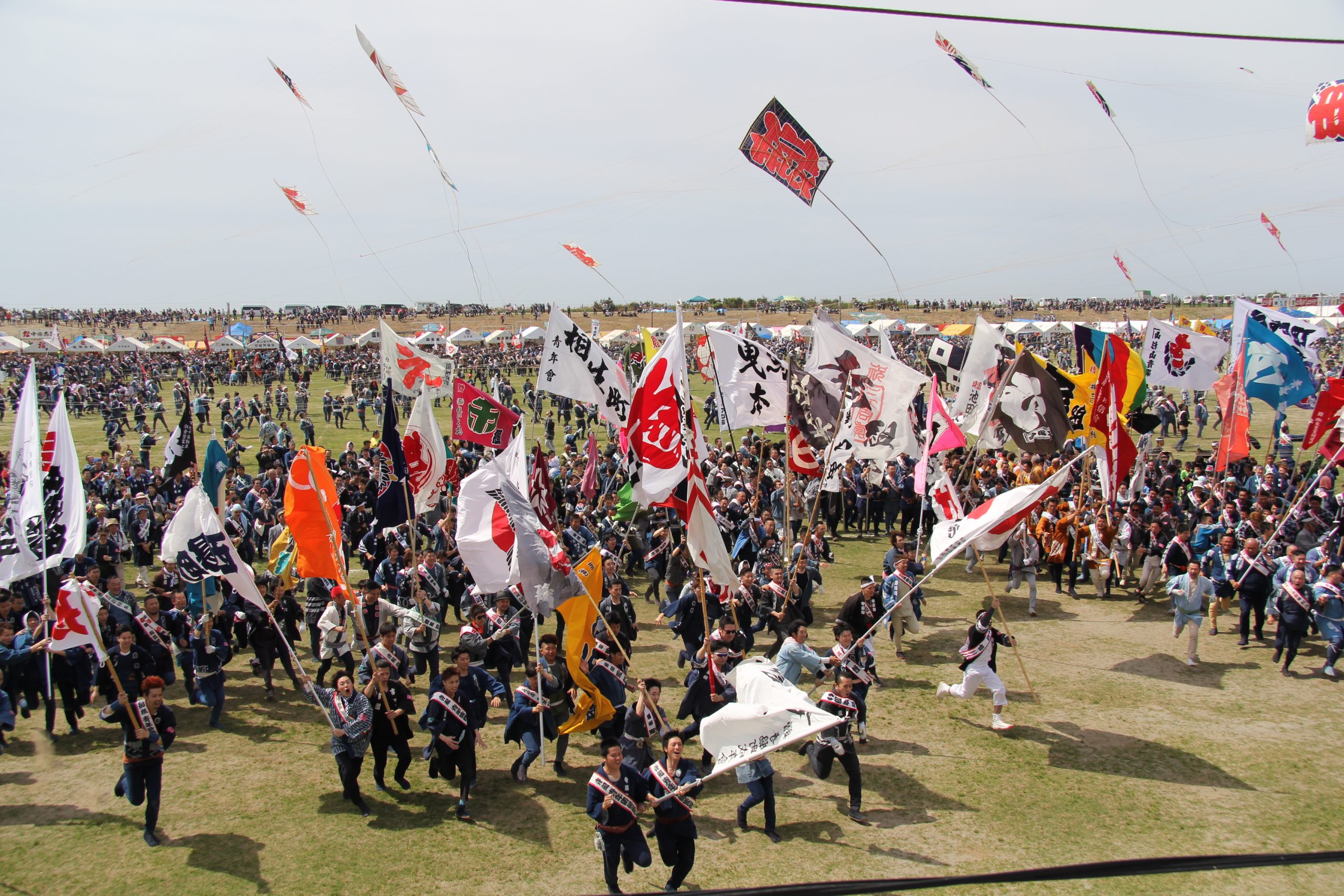
▲Photo provided:Hamamatsu and Lake Hamana Tourism Bureau
May 3rd, 10:00 AM.
With the signal of fireworks announcing the opening, the giant kites from participating towns soar high into the sky all at once.
In front of the festival headquarters, young men carrying the town’s flags gather.
With the bold calls of “Oisho, Oisho,” they engage in a fierce Neri, heightening the excitement for the festival’s opening.
Highlight 2: First Kites
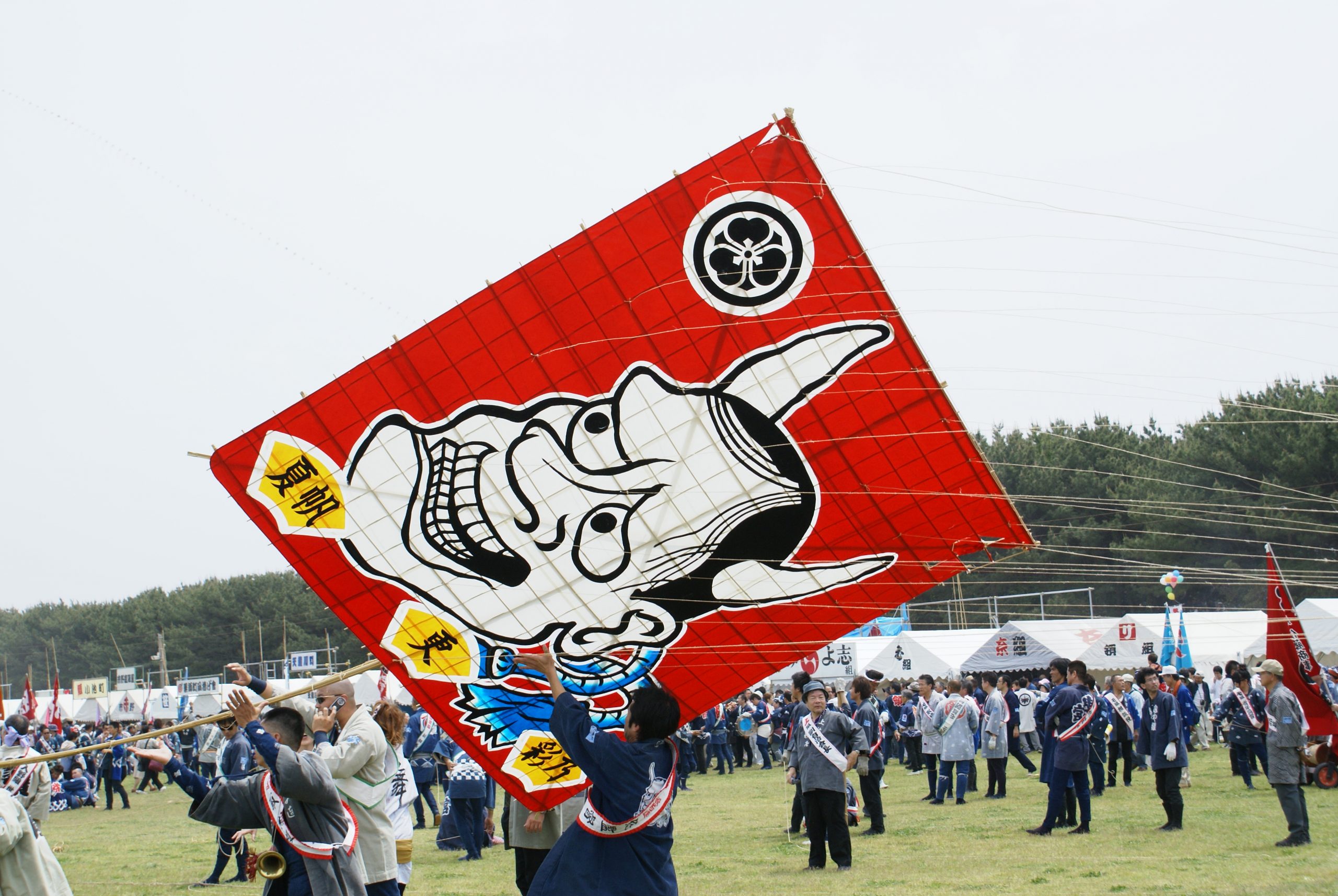
▲Photo provided:Hamamatsu and Lake Hamana Tourism Bureau
On the first day, May 3rd, the towns celebrate the birth of first-born children and wish for their healthy growth by flying the “first kites” in each town.
When the giant kite, featuring the first-born child’s name and family crest, soars high in the wind, the townspeople cheer with cries of “Oisho!” and engage in a Neri, celebrating the first-born family with a spirited chorus of “Banzai!”
Highlight 3: Rappa (Trumpet) Brigade
The “Rappa Brigade” inspires the first kite flying, Neri, and kite-cutting battles with their bold and powerful trumpet sounds.
In addition to the adult rappa brigade, the “Children’s Rappa Brigade,” primarily composed of elementary school students, demonstrates the results of their practice and brings vibrant energy to the festival with their lively performance.
Highlight 4: Children’s Kite Flying
May 5th is recognized as “Children’s Day” in Japan.
In connection with this, the annual “Children’s Kite Flying,” where elementary school students from each town experience flying giant kites, takes place.
Highlight 5: Kite-Cutting Battle
The “Kite-Cutting Battle,” where the townspeople fiercely tug at the intertwined kite strings, is the highlight of the festival.
On the 4th and 5th, fierce battles are held at various outdoor locations.
–Column1: Kite Sizes and Takojirushi (Kite Marks)
☆About Kite Sizes
The kites used in the kite battles range in size from 2 jo to 10 jo.
The optimum kite size is considered to be between 4 jo and 6 jo.
1 jo is equivalent to 1.25 m², or 12 sheets of traditional Japanese mino paper.
4 jo kite is 2.4 m² (48 sheets), 6 jo kite is 2.9 m² (72 sheets), and 10 jo kite is 3.64 m² (120 sheets).
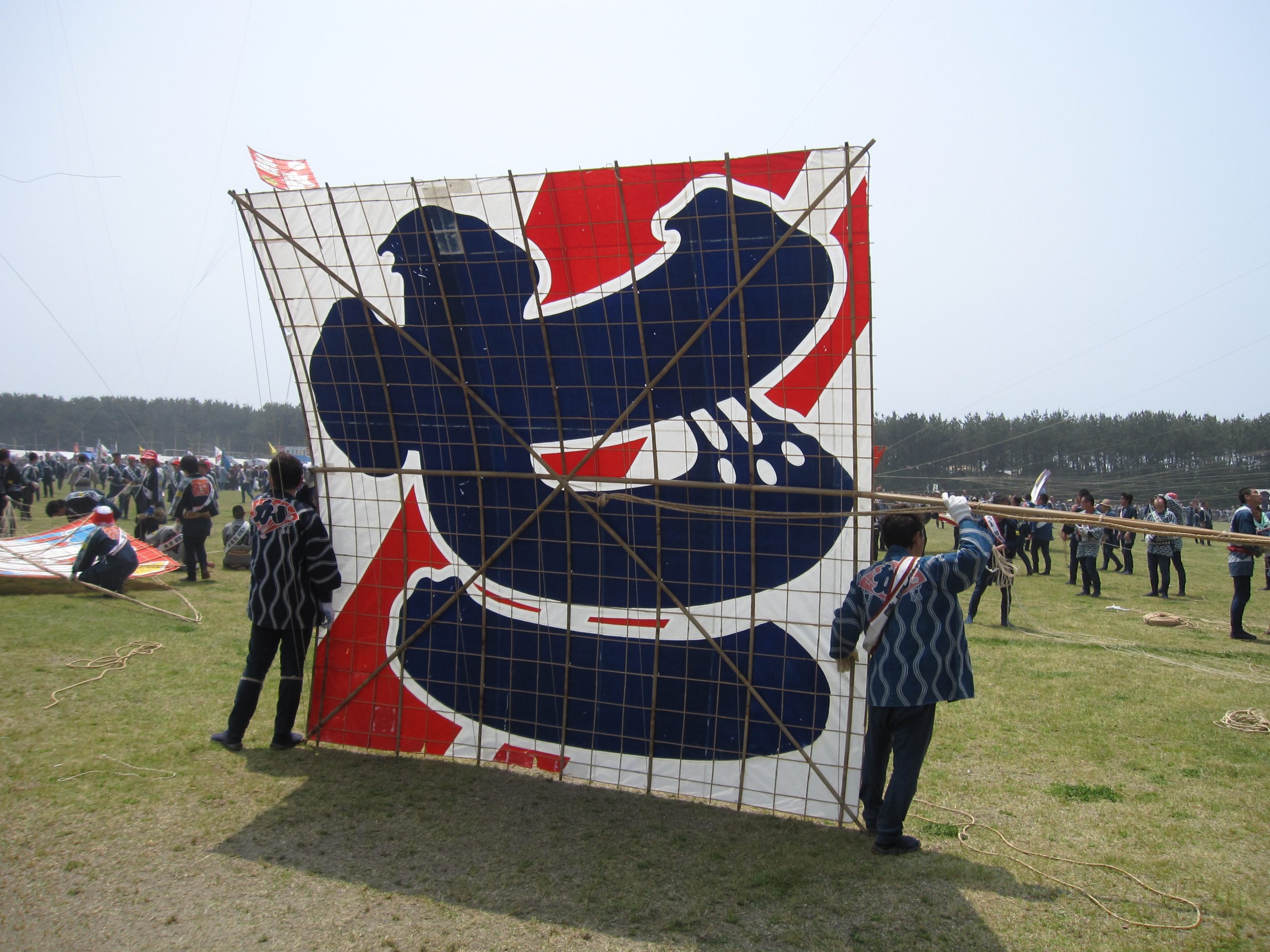
▲Photo provided:Hamamatsu and Lake Hamana Tourism Bureau (The kite is about this big when someone holds it.)
☆About Takojirushi (Kite emblem)
A takojirushi refers to the characters or symbols drawn on a kite.
Every town has its own unique takojirushi. The designs are often based on the town’s name or created to express a sense of unity and local pride.
The designs typically use one or two colors, such as red and blue, and have a simple, straightforward style.

(So many unique kite designs!)
–Column 2: Costumes
Only those wearing the official happi coats with the patch can participate in the kite flying.
【Hanten】”Hanten” is a garment worn under the happi coat, often referred to as an “inner hanten.”
【Hara-gake】”Hara-gake” is part of traditional Japanese artisan attire. Indigo dye, black, and navy blue are the main colors. Worn in combination with a koi-guchi shirt.
【Momohiki】Similar to the hara-gake, indigo-dyed, black, and navy are the main colors.
【Jikatabi】It is recommended to match the colors of the hara-gake and momohiki.
【Hachimaki】There are several styles of Hachimaki, but the most popular are the “Kuwa-gata Kaburi” and the “Kenka Kaburi.”
【Happi】The topmost garment is the town-specific happi coat. According to the regulations, the length of the happi coat must be at least 20 cm above the knee. The design on the back of the happi coat is often the same as or an arrangement of the takojirushi, with some towns featuring completely different patterns, reflecting the unique characteristics of each town.
【Obi】Obi used to tie the happi coat or hanten. There are two types: the kakuobi and the makiobi.
4.Goten-yatai Parade – Illuminating the Night with Magical Splendor
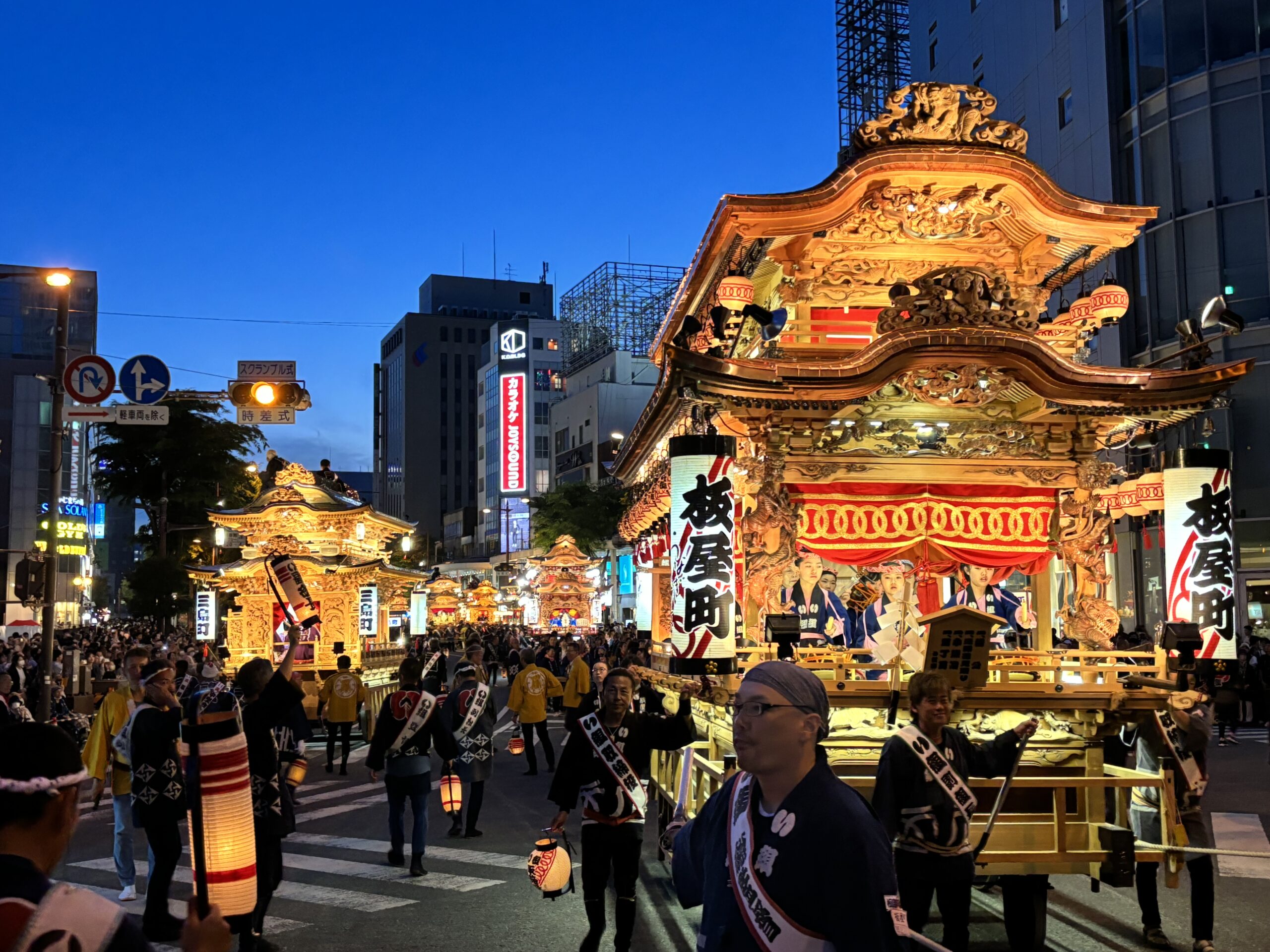
As the sun sets, the festival shifts to the heart of the city.
Lavishly decorated Goten-yatai floats make their way through the streets, filling Hamamatsu with the energy and excitement of the festival.
Highlight ①: Magical Night Parade of Goten-yatai
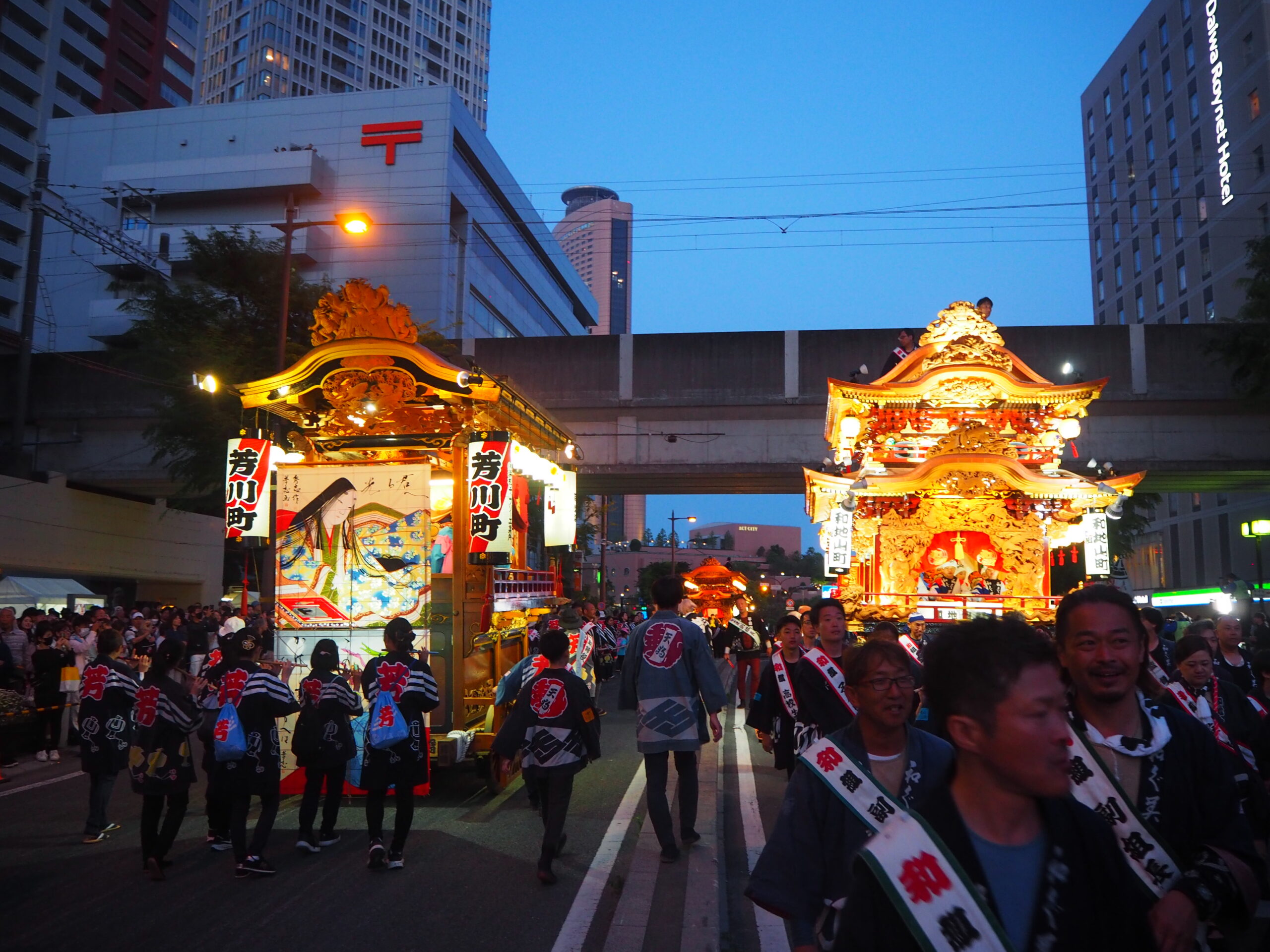
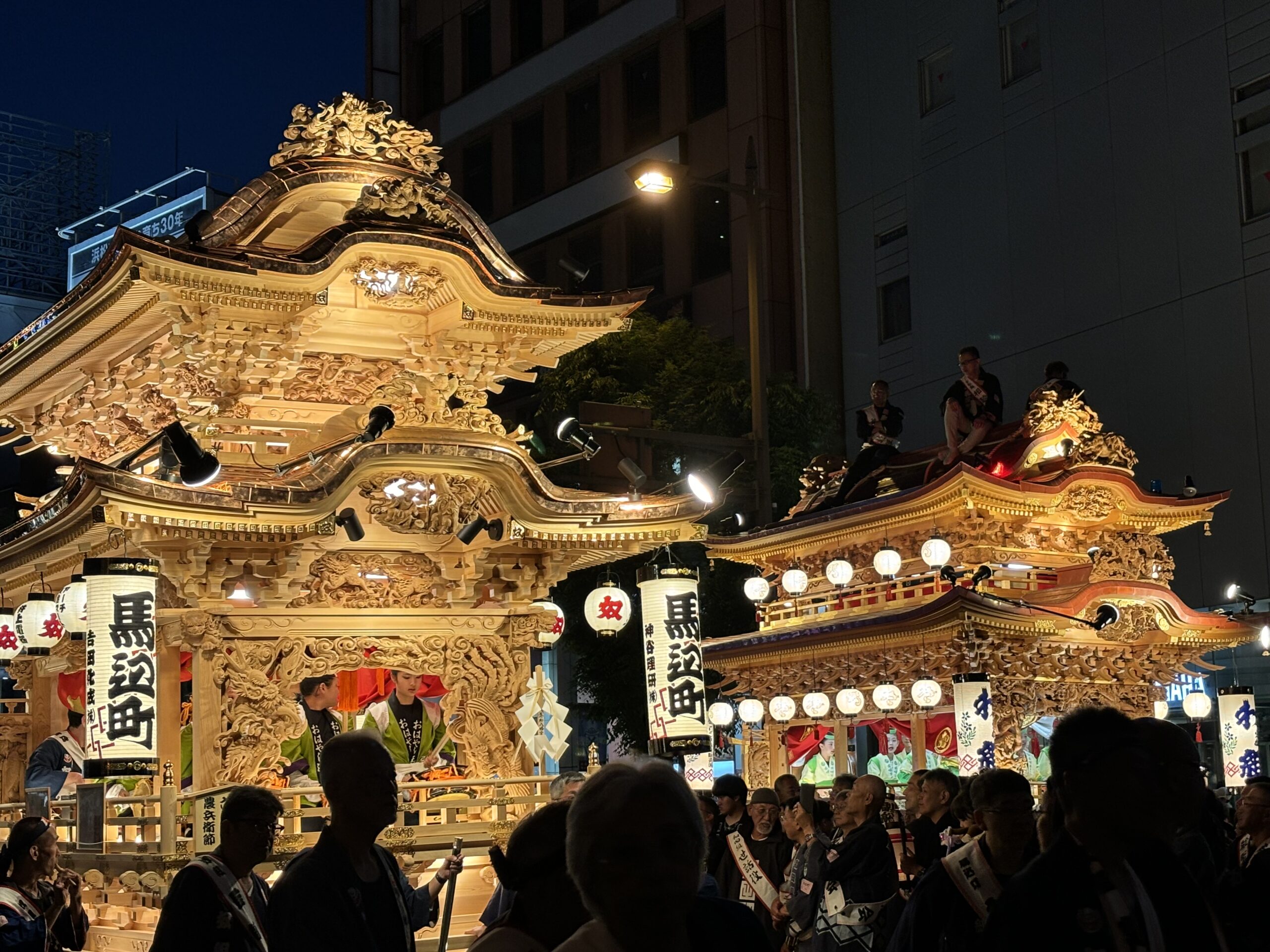
At 6 p.m.
Elaborately decorated goten-yatai floats from each town, boasting intricate carvings and lavish embellishments, begin to appear in the heart of downtown Hamamatsu.
The floats, beautifully illuminated and even more splendid, line up along the main Kaji-machi Street and slowly make their way forward, in sync with the lively sounds of the ohayashi festival music.
Highlight ②: Ohayashi Festival Music

The children, mostly elementary school students, play ohayashi (traditional festival music) atop the floats.
Each town’s children wear matching outfits, with subtle makeup, and harmonize perfectly as they play the flute, drums, and other traditional instruments, creating elegant melodies.
Highlight ③: Goten-yatai Sculptures
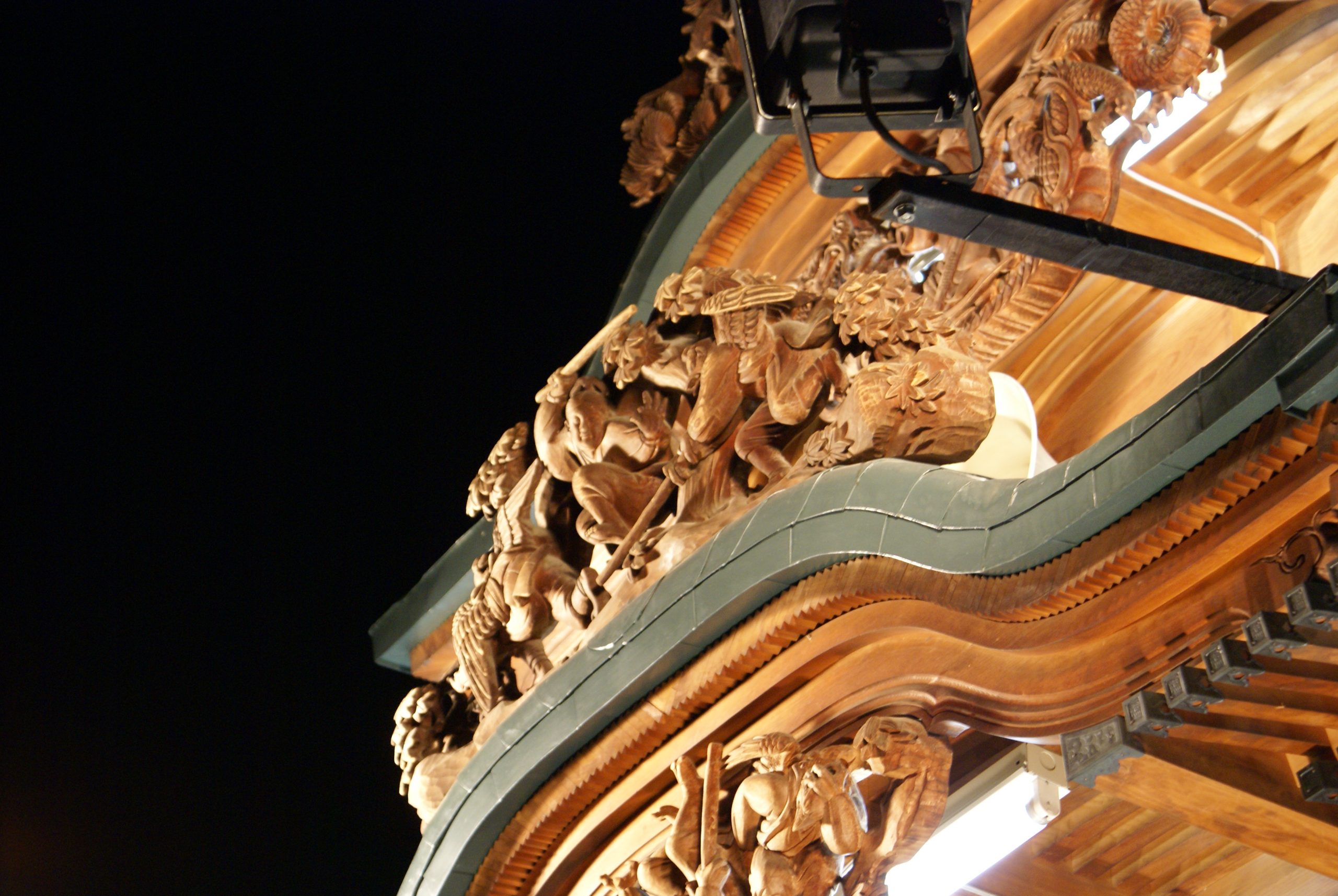
▲Photo provided:Hamamatsu and Lake Hamana Tourism Bureau

The Goten-yatai in Hamamatsu are adorned with various intricate carvings, including dragons, Chinese lions, wind gods, thunder gods, and the Seven Gods of Fortune. Each float features between 100 and 120 individual sculptures, which is a distinctive characteristic of the city’s floats.
The wood grain and straight grain are skillfully utilized, and the carvings are brought to life with rich expressiveness.
Highlight ④: Neri

Neri is another iconic element of the Hamamatsu Festival, alongside the kites and the goten-yatai parade.
The spirited Neri, seen throughout the day at the kite-flying grounds, culminates during the magical nighttime goten-yatai parade.
Dressed in traditional happi coats, groups of participants move in synchronized, sliding steps, creating a powerful wave of energy with shouts of “Oisho! Yaisho!” as they carry out the vibrant Neri.
Lit by the glowing Goten-yatai, the figures of the intense Neri emerge in a mystical light, turning the town into a whirlwind of excitement.
–Column: The Making of the Goten-yatai (Festival Floats)
The magnificent and luxurious Goten-yatai of the Hamamatsu Festival are primarily crafted from zelkova (keyaki) and cypress (hinoki) wood, with a natural, unpainted wood finish.
One of the notable features is that the natural beauty of the wood grain is left visible, showcasing its elegance.
It is made using traditional techniques, without a single nail, and is entirely secured by the assembly of wooden pieces.
The structure, which demonstrates its functionality the more it is used, is built to withstand over 100 years of durability.
Each town treasures and maintains the Goten-yatai as a symbol of pride and a valuable asset.
5.2025 Festival Information
Here is an introduction to the event schedule by venue.
Please note that event details and times may be subject to change.
 ̄ ̄ ̄ ̄ ̄ ̄
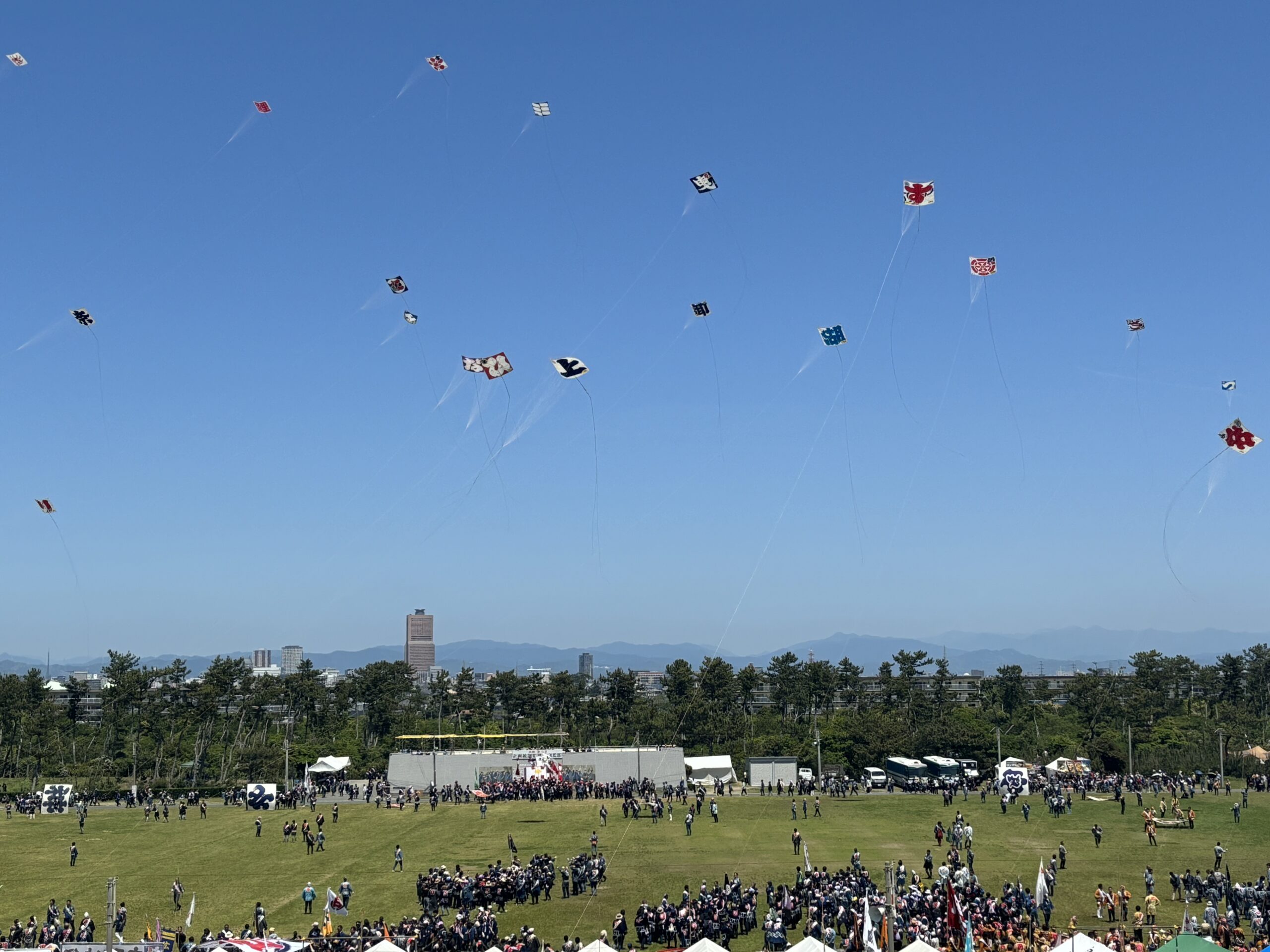
The Hamamatsu Festival is a celebration rich in history and tradition, strengthening the bonds within the community through active participation. Highlights include the grand Goten-yatai parade, the intense kite-cutting battles. With a variety of captivating events each year, this festival continues to charm audiences and remains a source of pride for the local community, offering an unforgettable experience for all who attend.
Be sure to come and see it for yourself!
Hamamatsu Festival Official Website: https://hamamatsu-daisuki.net/matsuri/
